A Guide to Tree Pruning
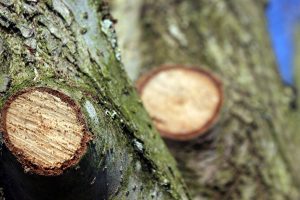
The right kind of pruning can make a tree more attractive, increase its value and deal with any issues the tree may be developing in terms of damage, stunted growth or space constraints. Pruning trees is a specialist skill; done without specialist knowledge it can potentially kill off a precious tree. As some trees are extremely tall, or in awkward positions, professional equipment is needed to ascend the tree and access those high branches.
Pruning is a task best carried out by arborists and professional tree surgeons who will know how best to maximise the tree's potential without compromising its vitality. The following article isn’t intended to replace that knowledge, but it will give you a good idea of what’s involved and why pruning is such an important aspect of arboriculture and conservation.
Why do trees need to be pruned?
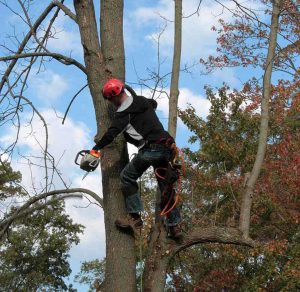 Regular pruning is beneficial for numerous reasons. Pruning can improve the appearance of the tree, facilitate air circulating around the tree, manage the height of the tree and remove dead or diseased branches. Additionally, pruning can help increase the number of flowers or fruit a tree may bear; get nursery-bred trees ready for transplant; or help to shape the growth of the tree in a particular fashion. Judicious pruning can improve the health of a tree, whilst severe and clumsy pruning can send a tree into shock.
Regular pruning is beneficial for numerous reasons. Pruning can improve the appearance of the tree, facilitate air circulating around the tree, manage the height of the tree and remove dead or diseased branches. Additionally, pruning can help increase the number of flowers or fruit a tree may bear; get nursery-bred trees ready for transplant; or help to shape the growth of the tree in a particular fashion. Judicious pruning can improve the health of a tree, whilst severe and clumsy pruning can send a tree into shock.
Types of tree pruning
There are various common techniques in pruning, such as directional pruning in which branches can be removed to shape the tree while facilitating its structural soundness. Other techniques include pollarding, vista pruning or crown reduction. Below is a breakdown of the various types of pruning technique which can vary depending on tree species, age and growth.
- Crown lifting entails removing a tree's lower branches up to a certain level. This is usually set at around a third of the tree's height. This is frequently carried out where access is required for vehicles and pedestrians to pass underneath with safety. This technique also facilitates more light reaching the lower part of the tree which can encourage growth.
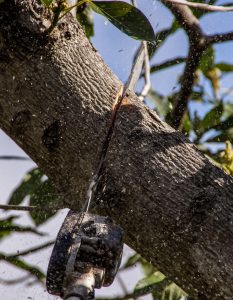 Crown thinning is usually carried out to contain the height and the span of a tree by selectively removing branches. This increases the penetration of light, and can help a fruit tree to produce more fruit.
Crown thinning is usually carried out to contain the height and the span of a tree by selectively removing branches. This increases the penetration of light, and can help a fruit tree to produce more fruit.
- Formative or directional pruning determines how the tree is shaped and made structurally sound by removing appropriate branches.
- Pollarding takes place when some deciduous species are trimmed back to a pollard, or knob. New growth will emerge from this point. This is thought to be quite an extreme pruning technique, and is carried out both to keep growth within certain parameters and to encourage plenty of shade from the canopy. Trees are often introduced to pollarding when young to help them get used to the practice.
- General pruning often takes in the dormant phase (autumn or winter) and routinely means reducing the length of the side branches, to let in more light and put the tree at less risk of damage from storms or high winds.
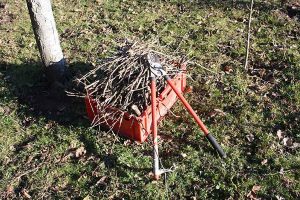 How to Prune Trees
How to Prune Trees
An efficient arborist begins pruning by making a plan. Before work commences it should be ascertained whether a tree is in a conservation area or governed by a Tree Preservation Order. If a tree is protected, then permission for pruning must be obtained from the local council. Information regarding protected trees situated on your land can be obtained from the Land Charges Register, which you can find by visiting your Local Authority Planning Department.
When this is in order, the arborist will aim for removal of the necessary parts while making minimal impact on the tree's trunk. Where branches join, three categories of union may be encountered: collared, collarless and codominant. Each must be cut in the appropriate manner so there is little chance of growth from the cut side and the “wound” can heal most readily. This is sometimes referred to as ‘target cutting’.
Tools of the Trade
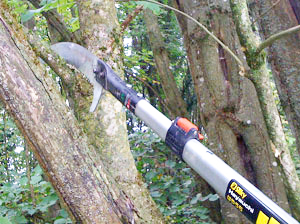 The professional arborist requires certain tools, such as chainsaws for dealing with hefty branches. They will also use pole saws, which are also referred to as long reach saws, for getting at branches in extremely high or awkward locations. The pruning saw is sharp, for precision cutting in more delicate operations and making drop crotch cuts or small wedges or to remove branches while protecting the tree's main trunk. Loppers are shears with long handles, good for chopping through smaller branches. The long handles provide extra leverage and the arborist may have more than one pair for tackling different jobs.
The professional arborist requires certain tools, such as chainsaws for dealing with hefty branches. They will also use pole saws, which are also referred to as long reach saws, for getting at branches in extremely high or awkward locations. The pruning saw is sharp, for precision cutting in more delicate operations and making drop crotch cuts or small wedges or to remove branches while protecting the tree's main trunk. Loppers are shears with long handles, good for chopping through smaller branches. The long handles provide extra leverage and the arborist may have more than one pair for tackling different jobs.
Safety is critical in tree pruning, which is why the services of a professional are generally encouraged. Done properly, pruning will make your trees healthier, more structurally sturdy and ultimately more beautiful.
The author : Paul George is the managing director of Landmark Trading Ltd, and has worked in the arboriculture industry for 14 years.
Comments are closed for this post.
Discussion
In London many trees are protected by TPO’s and there are many conservation areas. Another thing to remember when pruning is the percentage to cut back which should be no more than 30% and a lot less in some situations.

We are a new tree surgery company in Gillingham, Kent, and stumbled across this article.
It’s great that you included that it may be a dangerous practice both for you and for the tree if not done appropriately, because of injury and ruining the tree´s health. What we love to do around here is encourage people to have a look at their trees come spring and see if there are any spots missing new blossoms or leaves, because it can indicate sickness or even dead branches and we sometimes use that to direct our attention to those critical areas.
Tree pruning is by no means an exciting topic to write about but you did a great job touching on the main points. Thanks a ton.
Stefanos
24 June, 2021